After an overwhelming response to my series on Head Ornaments Series 1; worn by the Indian Maharaja I posted in July 2022, I look forward to sharing more Head Ornaments worn by the Indian Royal Family in my Series 2.
Head Ornaments worn by the royal authority reflected their power, righteousness, victory, and triumph and identified an individual’s political hierarchy. The more heavy and bejewelled the head ornament, the higher the wearer’s ranking.
𝐇𝐞𝐚𝐝 𝐎𝐫𝐧𝐚𝐦𝐞𝐧𝐭𝐬 𝐨𝐟 #𝐒𝐢𝐤𝐡𝐄𝐦𝐩𝐢𝐫𝐞

The Sikh Empire was formed under Maharaja Ranjit Singh’s leadership, popularly known as Sher-e-Punjab or “Lion of Punjab”. In image 1, Maharaja Ranjit Singh is seen wearing the Koh-i-Noor diamond as an armband and the famous Timur Ruby. Featured above are the images of the Maharajas of the Sikh Empire adorned in their magnificent jewels.
To know more about the #TreasuryOfSikhEmpire revisit my article.

Allow me to share the significance of the Turban ornaments, which formed one of the most important symbols of power in the Mughal court and the impact of these ornaments grew in the early 19th century. Featured above is the Jigha worn on the turban by Maharaja Ranjit Singh and a Kalgi, c.1840. The beauty of these jewels is their association with the rich history of the Sikh empire.
To know more about the #TreasuryOfSikhEmpire revisit my article.
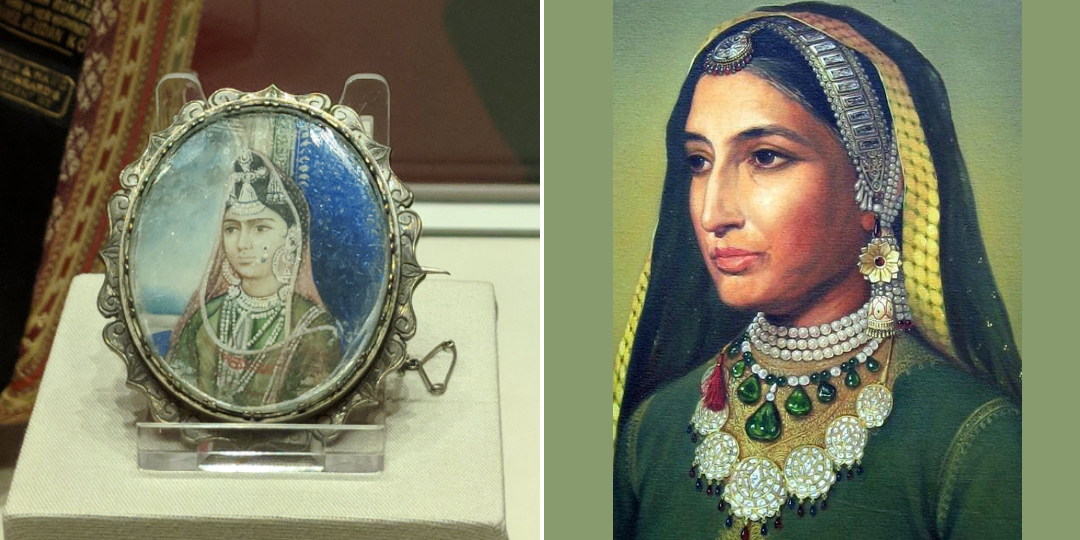
The head ornaments have been adorned not just by the Indian maharajas but also by the Maharanis.
After India’s independence, a majority of the jewels belonging to the Maharani Jindal Kaur were confiscated from the Treasury of Lahore and were later either inherited by the family or auctioned.
Featured above is the portrait of Maharani Jind Kaur, mid-19th century Gouache on ivory, set in a silver brooch.
To know more about the #TreasuryOfSikhEmpire revisit my article.
𝐇𝐞𝐚𝐝 𝐎𝐫𝐧𝐚𝐦𝐞𝐧𝐭𝐬 𝐨𝐟 #𝐌𝐚𝐡𝐚𝐫𝐚𝐣𝐚𝐎𝐟𝐊𝐚𝐩𝐮𝐫𝐭𝐡𝐚𝐥𝐚
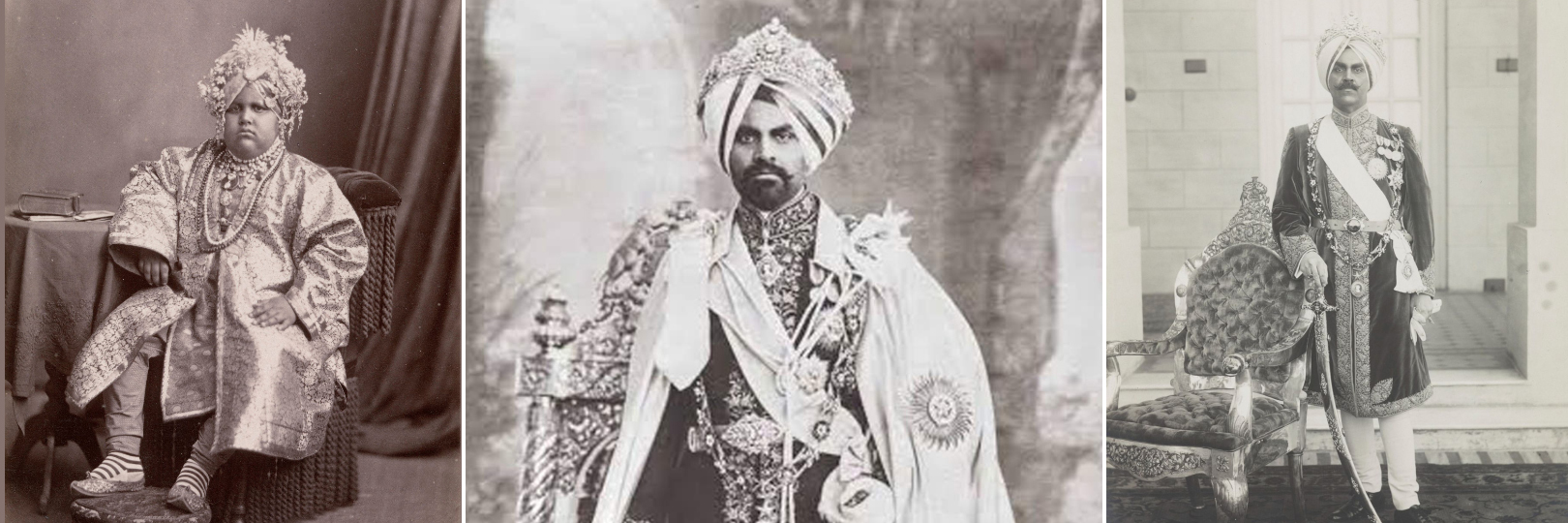
Let’s travel to Kapurthala and witness the head ornaments worn by the Maharaja of Kapurthala.
HH Maharaja Jagatjit Singh ascended the throne of Kapurthala state at the young age of 5. He received the title of Maharaja in 1911 and contributed to the development of his people and the state of Kapurthala. Featured above is the Kapurthala State Tiara; Hamilton Tiara adorned graciously by maharajas; one surely cannot miss the strands of natural pearls! This is royalty redefined!
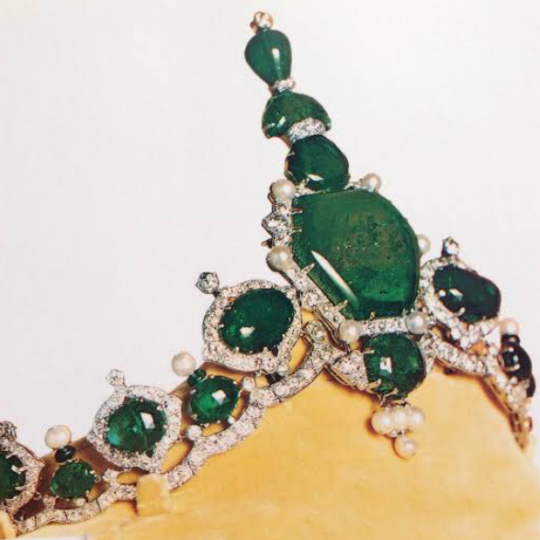
HH Jagatjit Singh Sahib Bahadur was the last ruling Maharaja of the princely state of Kapurthala in the British Empire of India and had a magnificent collection of jewels. Featured above is the exquisite Ceremonial Tiara of Maharaja Jagajit Singh of Kapurthala commissioned by Cartier. The design includes large emeralds inlaid in platinum and surrounded by white diamonds in European style, along with a large hexagon emerald in the center. What an immensely rich culture and heritage! Do you agree?
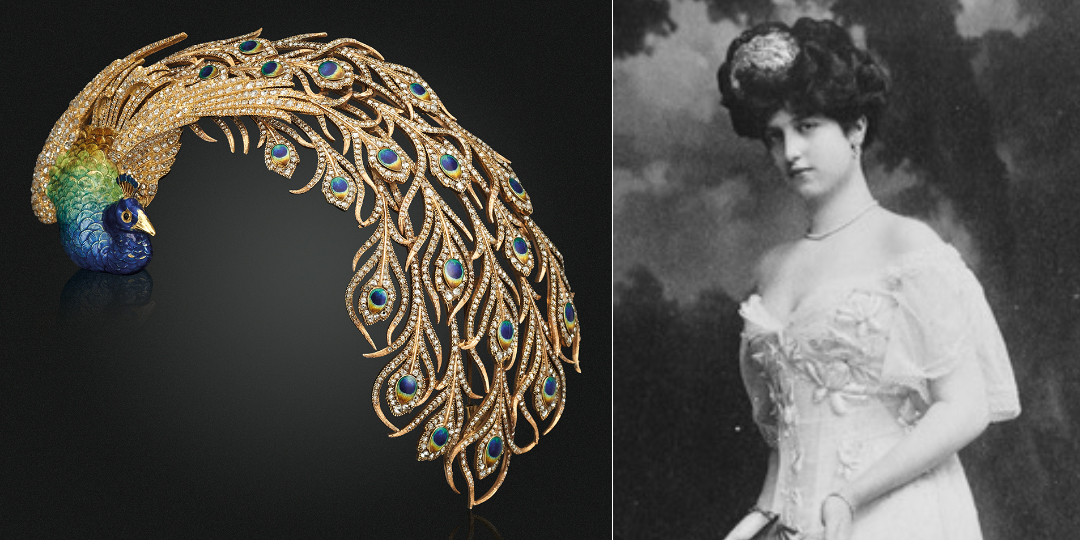
One of the noteworthy possessions about HH Maharaja Jagatjit Singh Sahib was that he was a great connoisseur of the French art de vivre and culture and was an important client of the jewellery houses of Place Vendôme and Rue de la Paix. The story goes that, to find appropriate jewellery worthy of a royal wedding that he was invited to attend of King Alfonso XIII and Princess Victoria Eugenia of Battenberg in Madrid, Maharaja made his way to Paris and found a magnificent enamel and diamond peacock aigrette at Mellerio that presented the perfect combination of Indian influence with a Western design sensibility; c 1905.
Maharaja wore the aigrette on his turban at the royal wedding and it was later worn by his wife Anita Delgado who used it as a hair ornament.
Safe to say, the trend of using one jewellery piece in different ways can be attributed to something that started in ancient times…what a rich and important legacy to be handed down over the ages!
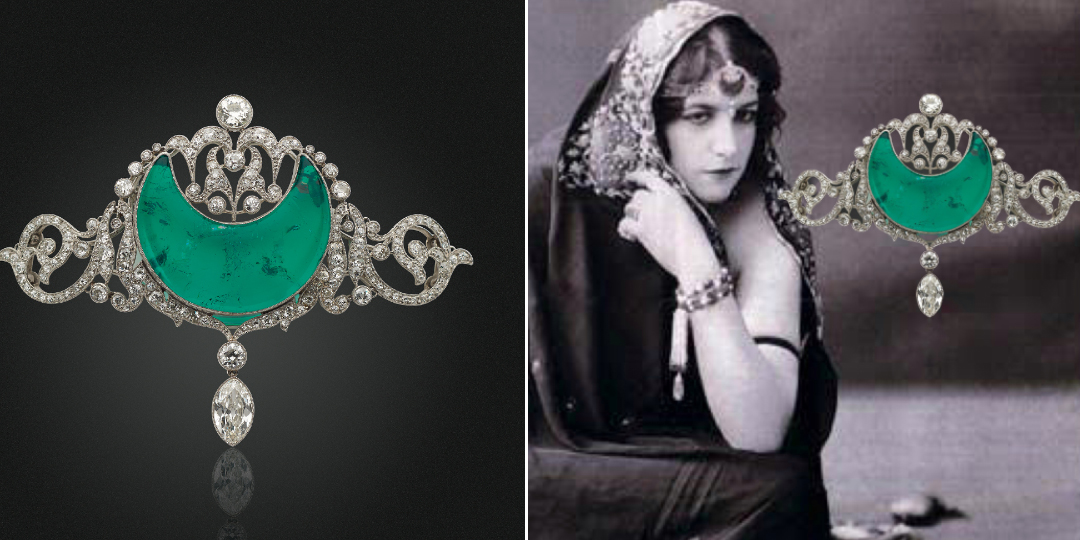
Allow me to share the story of the crescent-shaped emerald that was originally adorned on Maharaja’s most prized elephant.
HH Maharaja Jagatjit Singh’s wife Anita Delgado was as passionate about jewellery as Maharaja himself, and she fell in love with the crescent-shaped emerald graciously worn by Maharaja’s most prized elephant. Interestingly, Anita Delgado received the same emerald as a birthday gift from the Maharaja. She wore the Belle Époque emerald and diamond brooch on her forehead at official events. And it looked no less than a tiara.
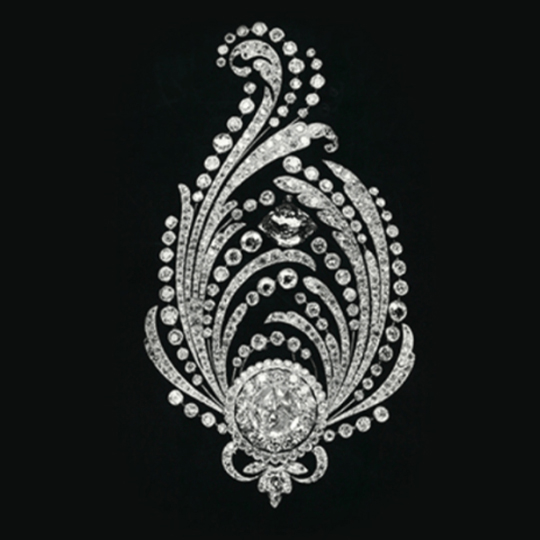
Another exclusive head ornament from the treasury of Maharaja Kapurthala is an aigrette-feather turban ornament made by Boucheron in 1905. This Paisley-shaped design is meticulously crafted in a traditional Indian feather plume and is set with diamonds, a briolette diamond and a large centrepiece gemstone. This Boucheron masterpiece is believed to be among the first pieces commissioned by an Indian Prince with a European jeweller. Maharaja Jagatjit Singh of Kapurthala often supplied European jewellery houses with precious stones from his treasury to be set in the latest Western style.
I would also like to add that Boucheron’s 2022 New High Jewelry Collection 2022 “New Maharajah“ draws inspiration from their designs originally executed for the Indian Maharajas and recreated in a more contemporary design.
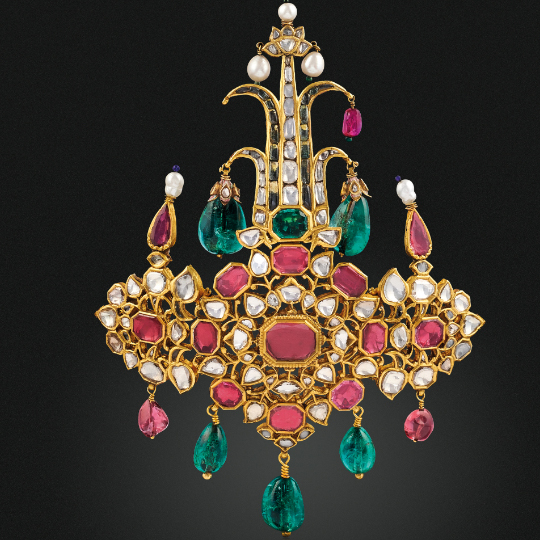
Presenting the last head ornament from the treasury of Maharaja of Kapurthala.
Featured above is a 19th-century antique multi-gem turban ornament of Maharaja Charanjit Singh of Kapurthala. This head ornament was recently auctioned at Christie’s Maharajas & Mughal Magnificence.
𝐇𝐞𝐚𝐝 𝐎𝐫𝐧𝐚𝐦𝐞𝐧𝐭𝐬 𝐨𝐟 #𝐌𝐚𝐡𝐚𝐫𝐚𝐣𝐚𝐎𝐟𝐏𝐚𝐭𝐢𝐚𝐥𝐚
Let’s travel from Kapurthala to Patiala for the magnificent jewels of the Maharaja of Patiala.
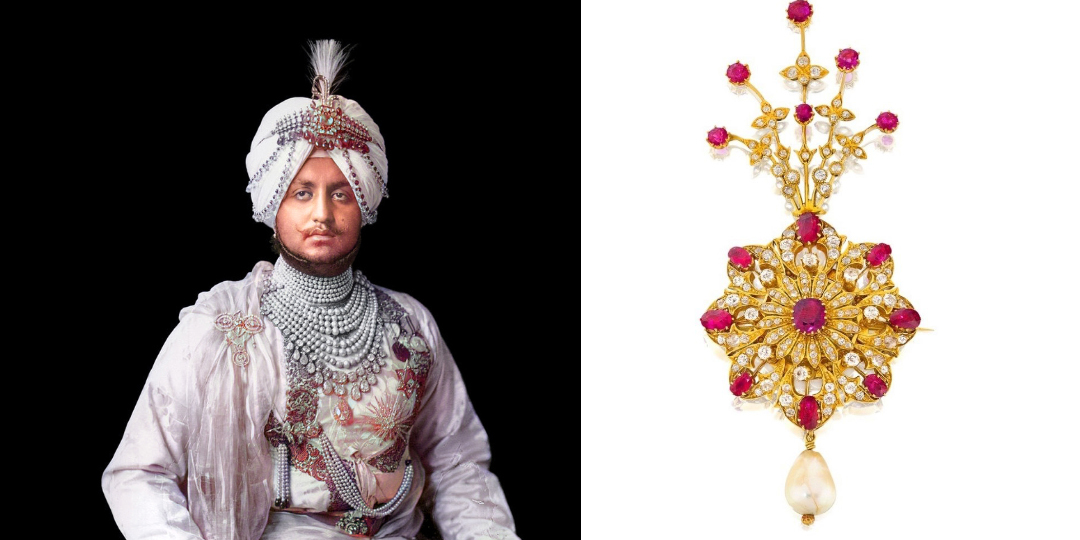
The first Maharaja of Patiala was Baba Ala Singh (1695–1765) and Maharaja Yadavindra Singh was the 9th and last ruling Maharaja of Patiala; who inherited the most fabulous jewels of the time!
Featured above is the ruby-set gold sarpech set with 133 diamonds, 15 Burmese rubies and a large natural pearl from the collection of Maharaja of Patiala, Bhupinder Singh, Punjab, circa 1910 sold by RoseBery’s London Auctioneers.
To know more about the#MaharajaofPatiala revisit my article.
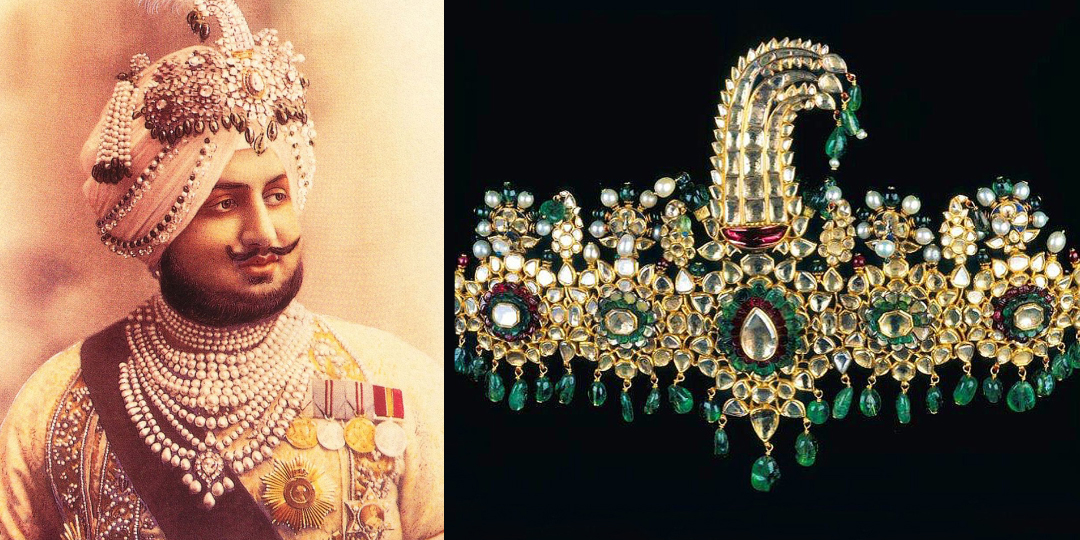
HH Maharaja Bhupinder Singh was the ruling Maharaja of the princely state of Patiala in British India from 1900 to 1938 and is known in the books of history for his opulent lifestyle. He was also the first person in India who owned a private plane in 1910. Featured above is the early 19th-century Patiala Sarpech set with diamonds, rubies and emeralds. The back of the Sarpech shows the intricacy of craftsmanship with foliate motifs of red, green and blue enamel. This sarpech was sold at Christie’s Jewels Magnificent Mughal Jewels auction on 6th October 1999.
To know more about the#MaharajaofPatiala revisit my article.
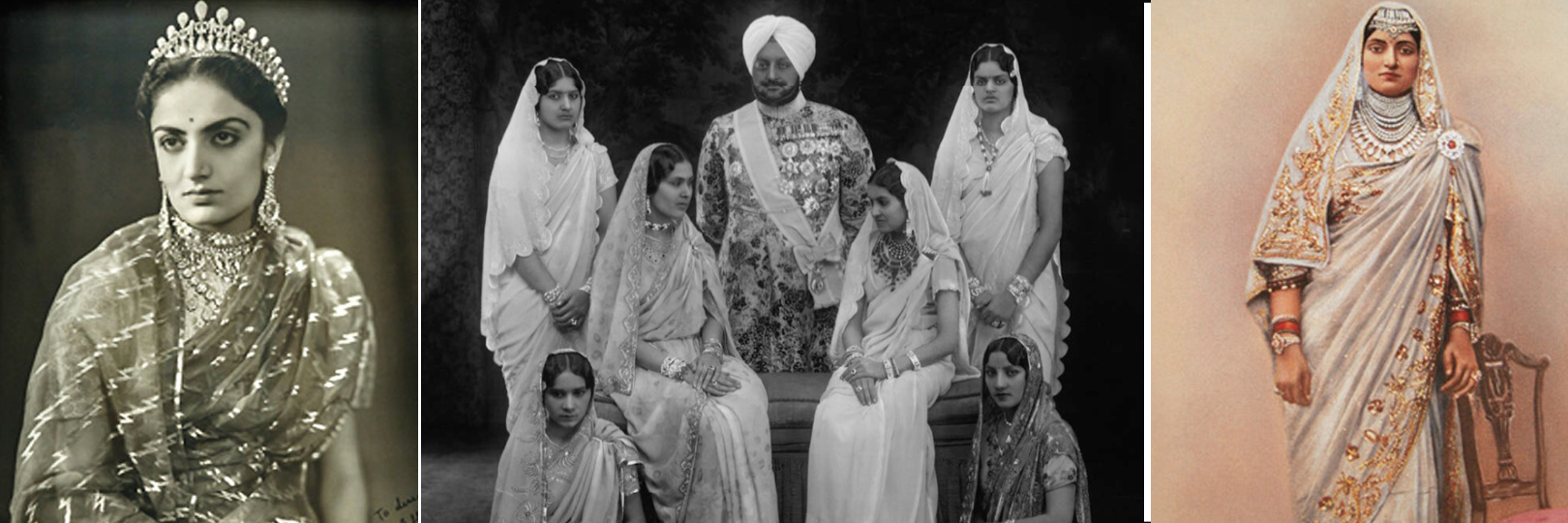
Head ornaments were worn by not just the Maharajas of India but also by their Maharanis.
Mehtab Kaur; the second wife of the ninth and the last Maharaja of Patiala HH Yadavindra Singh is seen in The Patiala Lovers Knot Tiara along with royal necklaces, bracelets and rings. According to historians, HH Maharaja Bhupinder Singh had a total of 365 queens and he took care of the comfort and convenience of all his queens. Amongst all the affairs and wives of HH Maharaja Bhupinder of Patiala had; Maharani Sri Bakhtawar Kaur Sahiba of Patiala (1892-1960) was the ‘official’ queen of Bhupinder Singh.
The story goes that HH Maharaja Bhupinder Singh supplied Cartier with countless gemstones from his treasury to be reset and redesigned for him and his wives and one of the most impressive jewels crafted by Cartier was the multi-layer Patiala Ruby choker necklace adorned by the Maharani of Patiala.
To know more about the#MaharajaofPatiala revisit my article.
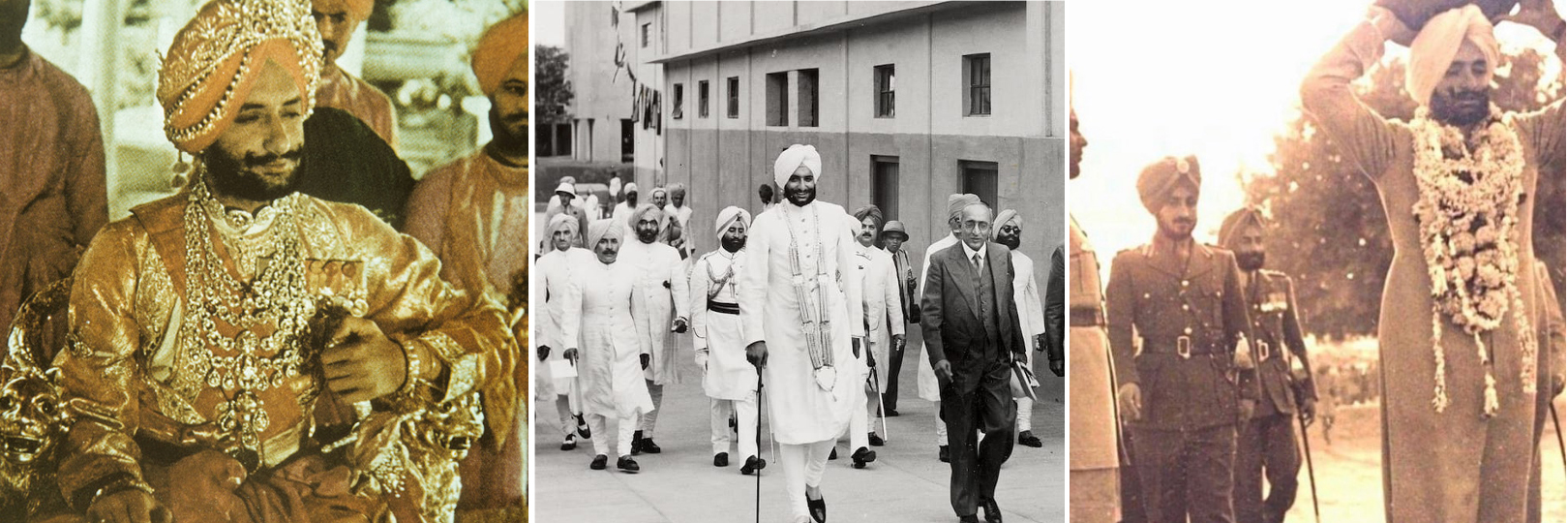
The 9th and last ruling Maharaja of Patiala was Maharaja Yadavinder Singh of Patiala. In the portrait, Maharaja’s turban is decorated with a magnificent diamond head ornament. The Maharajas of Patiala found ways to modernise their sense of style without losing their heritage and opulence. Don’t you agree?
To know more about the#MaharajaofPatiala revisit my article.
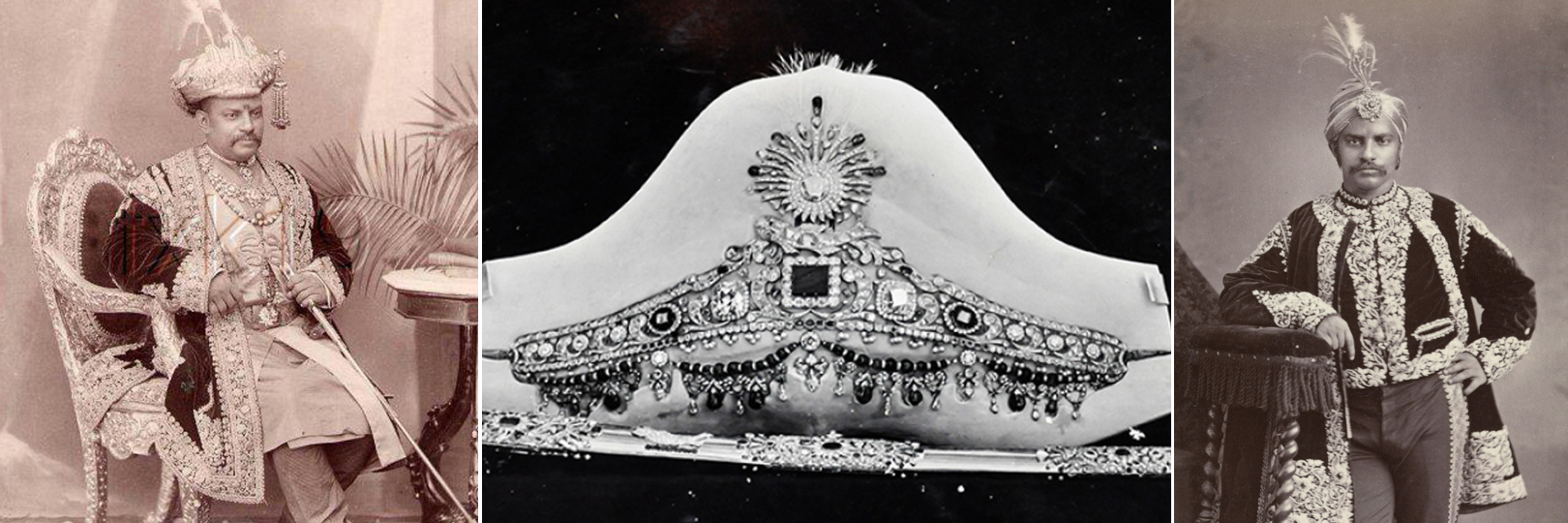
𝐇𝐞𝐚𝐝 𝐎𝐫𝐧𝐚𝐦𝐞𝐧𝐭𝐬 𝐨𝐟 #𝐌𝐚𝐡𝐚𝐫𝐚𝐣𝐚𝐎𝐟𝐃𝐚𝐫𝐛𝐡𝐚𝐧𝐠𝐚
Let’s travel to Bihar and see the magnificent jewels of Maharaja of Darbhanga.
The Maharaja of Darbhanga was a great connoisseur of jewellery, and his collection is believed to be grander than the collection of the Nizam of Hyderabad. Maharaja Lakshmeshwar Singh Bahadur, who ruled from 1860 to 1898 was the biggest philanthropist among the Darbhanga rulers. He devoted himself to public works and won a reputation as a progressive and liberal-minded statesman. His younger brother Maharaja Rameshwar Singh Bahadur (1898 to 1929) was the father of Maharaja Kameshwar Singh Bahadur, who ruled from 1929 until India’s Independence and contributed to the expansion of industrial and business sectors.
Swipe to see the head ornaments of the Maharaja of Darbhanga.
To know more about the #MaharajaOfDarbhanga revisit my article.
𝐇𝐞𝐚𝐝 𝐎𝐫𝐧𝐚𝐦𝐞𝐧𝐭𝐬 𝐨𝐟 #𝐍𝐚𝐰𝐚𝐛𝐎𝐟𝐑𝐚𝐦𝐩𝐮𝐫
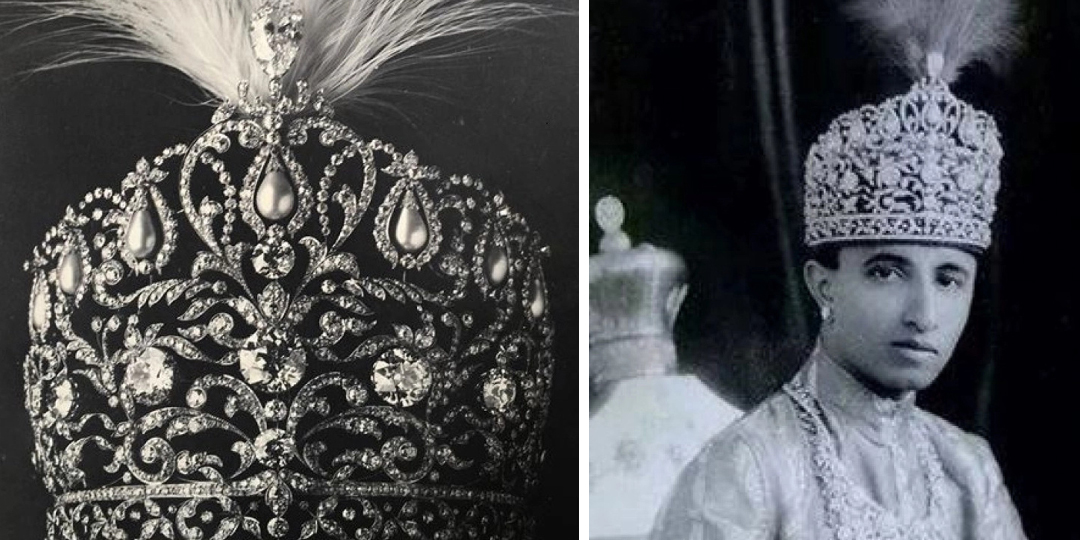
As we continue with our series on the head ornaments of Maharajas, I want to introduce you all to the treasure of the Nawab of Rampur. It is estimated that the value of the jewels of Rampur was almost equal in value to the collection of Baroda Jewels and they are believed to be thrice the value of the collection of Maharaja of Jaipur.
Featured above is the crown made of diamonds and pearls adorned by Nawab Raza Ali Khan,(1930-1966) who was the last ruler of Rampur before it merged with the Union of India after independence
Most of the Indian Maharajas commissioned famous jewellers such as Cartier, Boucheron, Chaumet, and Mellerio to craft precious stones in intricate and opulent designs.
If you want to know more about our rich history, revisit my article #NawabOfRampur and view the exclusive jewels from the treasury of Nawab of Rampur.
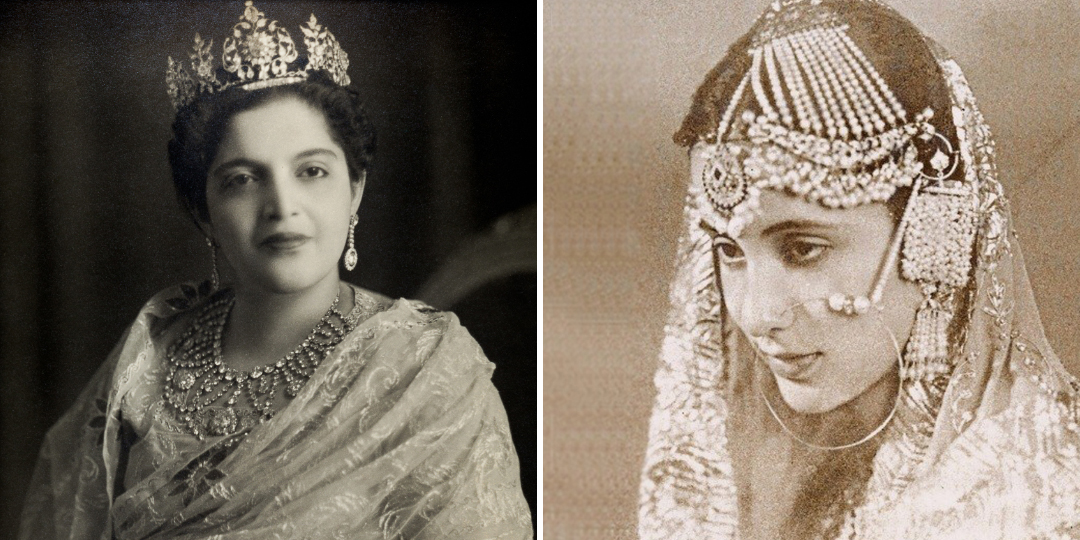
When we speak of the royal family, we cannot skip the mention of the jewels worn by the beautiful BEGUMS! Rajmata Rafat Jamani Begum was the wife of Nawab Raza Ali Khan, the last Nawab of the princely state. Rajmata is seen wearing a spectacular diamond tiara and necklace, studded with gold and big diamonds.
Women of Rampur adorned their heads with Passa or Jhoomar which makes an essential part of the jewellery of a Muslim bride.
Revisit my article #NawabOfRampur and view the exclusive jewels from the treasury of Nawab of Rampur.
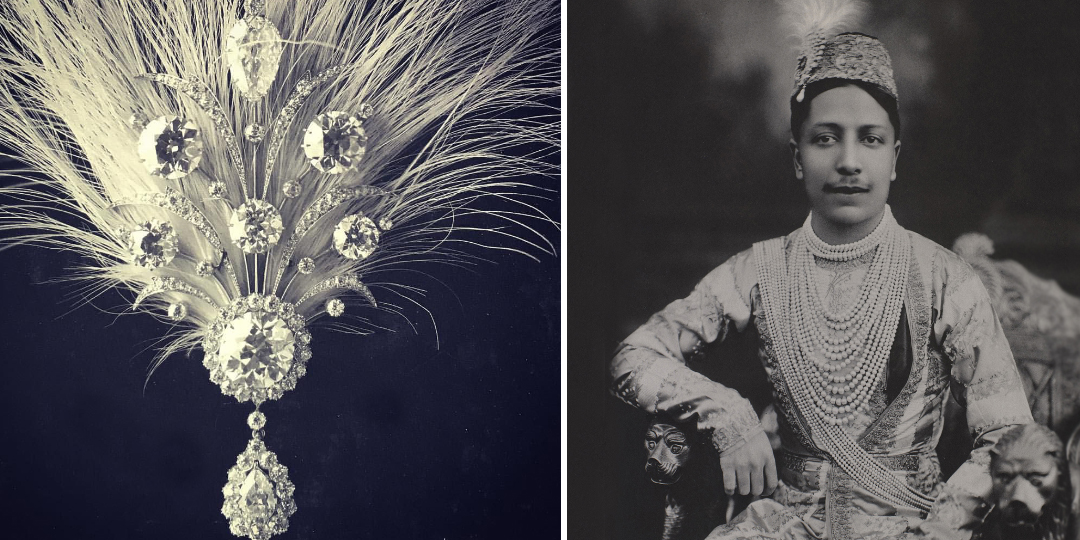
A peek into the safely guarded treasury of nawabs!
How do you sum up royalty? Well, it is always best depicted by heritage elements worn by royals! On that note, I’m thrilled to share with you some more state jewels that were adorned by the Nawabs. Interestingly, these jewels were kept in a locked room with thick walls 3-4 feet wide and isolated from the rest of the rooms of the palace for safeguarding it. Multiple keys were used by the nawabs to open this jewel safe as an additional measure.
Rampur had the largest and the finest collection of Natural Pearls in India, few of the pieces exceeded the sizes of a thumbnail. Along with the strings of natural pearl necklaces, the nawabs also wore approximately thirty strings of pearl sash falling from the shoulders until the hips.
Revisit my article #NawabOfRampur and view the exclusive jewels from the treasury of Nawab of Rampur
𝐇𝐞𝐚𝐝 𝐎𝐫𝐧𝐚𝐦𝐞𝐧𝐭𝐬 𝐨𝐟 #𝐌𝐚𝐡𝐚𝐫𝐚𝐣𝐚𝐨𝐟𝐈𝐧𝐝𝐨𝐫𝐞
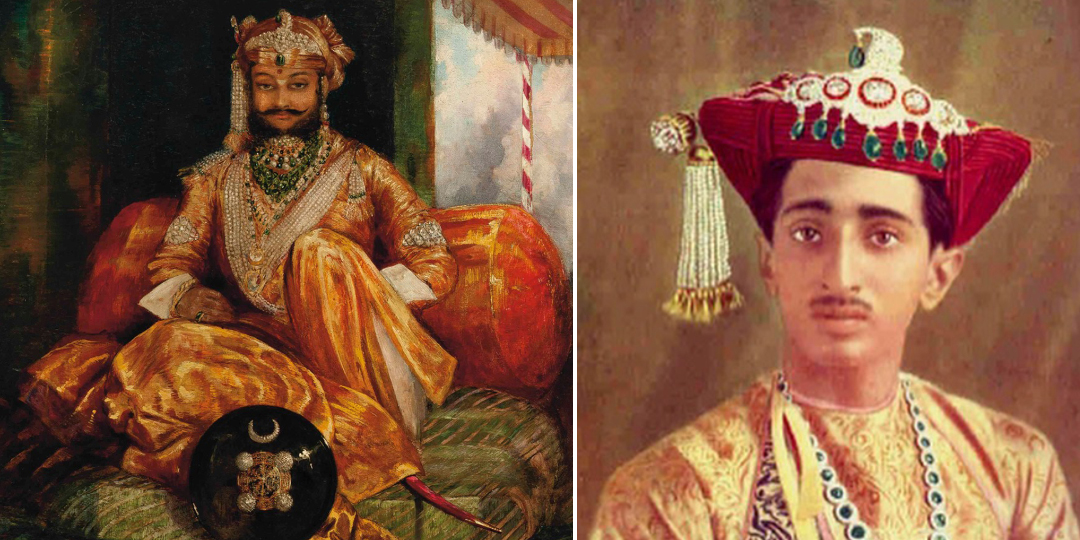
From Rampur, now let’s travel to Indore.
Indore State also known as Holkar State was ruled by the Holkar dynasty founded by Malhar Rao in 1721 and HH Yashwant Rao Holkar II, Holkar 14; 1926-1948 was the last ruling Maharaja of Indore.
Maharaja Malhar Rao and his descendants were great connoisseurs of art, cars and jewellery that were estimated to be worth 40 million dollars in 1930-40. Today let’s view the spectacular head adornments adorned by the Maharajas of Indore. Do notice that most of the royal jewels were adorned with emeralds, which have been one of the most popular gemstones in Indian history for their unique green color and rarity.
Revisit my article #MaharajaOfIndore and view the exclusive jewels from the treasury of Maharajas.
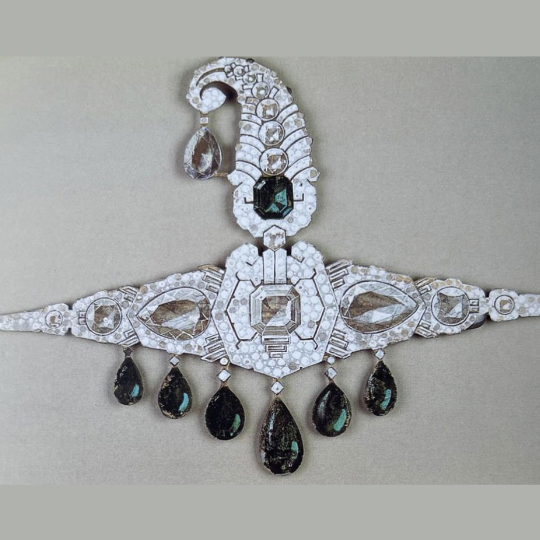
We end the artcile with the exquisite head ornament designed by Mauboussin.
The story goes that a close friendship between HH Yashwant Rao Holkar II and Jean Goulet a member of the Mauboussin in the 1930s led to the French jewelry house becoming an official jeweller of the Holkars. Jean Goulet was then invited to Indore by HH Yashwant Rao Holkar II to view the family treasure and was commissioned to make important jewellery reflecting modern time.
Featured above is the turban ornament made with the famous Indore Pears and emeralds, gouache on lead for the Maharaja of Indore in 1935.
Revisit my article #MaharajaOfIndore and view the exclusive jewels from the treasury of Maharajas.
After seeing all these magnificent jewels from the Indian Maharajas it’s impossible to estimate the value of their entire collection, isn’t it?
